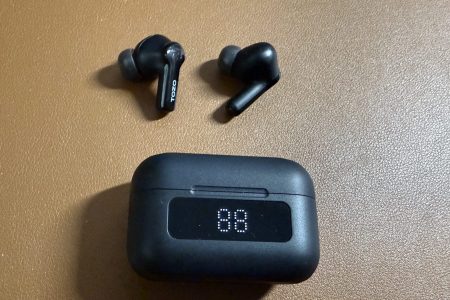ADHD Multitasking
The idea of human multitasking is a bit of a misconception. A computer with multi-core processors can multitask, but can a human really multitask? Even more to the point, can there be ADHD multitasking?
Multitasking has been a business and productivity buzzword for at least a decade. It’s mentioned in job descriptions and job postings. It’s listed as a top skill in resumes and cover letters. However, is it a real skill that can be obtained or an exaggerated myth?
In reality, multitasking is not a practical or possible skill for humans. Our brains don’t have multiple processors with multiple cores. In essence, we are not computers. We cannot truly process multiple streams of data and tasks simultaneously. This doesn’t just apply to ADHD multitasking but to anybody attempting to multitask.
ADHD Task-Switching
More accurately, humans can switch their attention between different tasks. This skill is generally called task-switching. If we could see our brains process information, we would see our brains switch between competing tasks. These competing tasks are a lot like how economics describes scarce resources.
Economics describes the study of how we allocate scarce or limited resources. We can use a similar method to describe how our brains allocate their limited resources to an infinite amount of potential tasks. Our brains have limited resources, and we need to allocate those resources to the most critical tasks.
Beyond just allocating our brain’s resources, we need to include a variable for task-switching. The task-switching variable is the amount of resources necessary to keep track of an increasing amount of tasks.
A Practical Example of ADHD Task-Switching
For example, let’s imagine that we are only working on a single task. That task is data entry. Our brain can dedicate all resources to this single task without using any resources for task-switching.
Now, let’s imagine that we added another task to our scenario. This second task is adding a graph to a spreadsheet. To handle both tasks, we will need to employ our task-switching skills. In our example, we will need to allocate at least some of our brain’s resources to remembering our current place with both tasks.
Essentially, we’ll need to remember where we left off with data entry and what steps we have remaining in creating the spreadsheet graph. For example, we could finish the data entry, then move on to making a spreadsheet graph. However, if we want to task-switch, we’ll need to keep track of our place for both tasks.
Going back to our computer analogy, the resources used to remember the current location in both tasks are like cache memory. Cache memory in our ADHD brain is like our short-term memory. The more tasks we attempt to complete simultaneously, the more additional short-term memory is needed to handle the task-switching.
If we use our economics analogy, we have a limited amount of short-term memory resources. This is especially true for ADHD brains. If each additional task requires additional resources to remember our place in each task, we will eventually run out of short-term memory. Once we run out of short-term memory resources, we lose track of the progress in each task while task-switching.
Limited short-term memory resources are the core issue with task-switching. As we add more tasks to our simultaneous plate, we run out of short-term memory. For example, if it takes 5 minutes to complete the data entry task and another 5 minutes to finish the spreadsheet task, we need to add the task-switching variable. So, 5 minutes each for two tasks, and another 3 minutes to keep track of our place in completing both tasks.
In this example, if we finish the first task entirely before starting the next task, the total time spent is ten minutes. However, if we attempt to task-switch with both tasks, the time increases by three minutes for a new total of thirteen minutes.
This is not just a theoretical idea. Try it out for yourself. Try completing two tasks in order, completing the first task before starting the second task. Now, try to complete two similar tasks simultaneously while switching back and forth between the two tasks. In most cases, it will take longer to complete both tasks when task-switching.
ADHD Task-Switching at work
So, we’ve determined that our brains are not MacBooks, and we have a limited amount of short-term memory for completing tasks. For those of us with ADHD, our brain’s short-term memory is even shorter than neurotypical brains. Also, many jobs require multitasking skills, even though we have determined that true multitasking is impossible. So, instead of ADHD multitasking, we are task-switching.
We need to maximize our task-switching skills to accomplish what many jobs require. A primary method of increasing our task-switching skills involves decreasing the time required to switch tasks. As referenced above, this means reducing the task-switching variable. Essentially, we need to become efficient at returning to a task at precisely the same spot that we switched away from that task.
Taking frequent notes of my tasks allows me to return to a task with less time wasted. So, when I leave a task to work on another task, I make notations of exactly where I left off with each task. Then, when I return to the previous task, I have notes that guide me to the correct place with the task.
Let’s return to our previous example of data entry and making spreadsheet graphs. Let’s say I start my day working on data entry and am then asked to switch to making spreadsheet graphs. Before leaving the data entry task, I make a notation in my work journal of the page and line number of my current place. Then, I switch to making spreadsheet graphs. If I need to switch back to data entry, I make another notation in my work journal of what steps I have completed with making spreadsheet graphs. Then, I use the data entry notation in my work journal to tell me exactly where to pick up with the data entry task.
ADHD Productivity Tools
I always have my work journal next to me at my desk. If I need to quit working on a task to attend a meeting, my work journal helps me efficiently return to my task after the meeting. I use the work journal to note my progress on all the tasks I am working on completing. If I step away or start a new task, my work journal has a notation to tell me exactly where to pick up when I return to any task.
It doesn’t have to be a work journal. It could be a task management app or a detailed to-do list. The key is to keep your notes detailed and organized so that you can find relevant information quickly.
If I use a task manager app, I add additional steps to my tasks to break them down into smaller tasks. This becomes a quick way of finding my place with any task. I would simply glance at a task and see what steps have already been marked complete. A good task management app is Todoist. Within Todoist, I would create a task for data entry. I would create nested steps for each page that needed to be completed within the task. I would also create a task with steps for completing the spreadsheet graph.
If I use a note-taking app like Microsoft OneNote, I make periodic notations of what task I am currently completing and what steps I have completed. The beauty of OneNote is its ability to allow notes of almost any format. So, in OneNote, I could take basic notes as well as insert a checklist of tasks and steps. For example, with basic notes, I might type or write a line that says, “I am working on my data entry task. There are a total of 8 pages, and I have just finished 2 pages. I am currently on the second line of the third page.”
Everybody’s short-term working memory has a finite capacity. With ADHD, our short-term working memory is notably decreased compared to neurotypical brains. So, it’s essential to maximize the available short-term memory we do have. This is true for anybody, but especially true for those with ADHD.
ADHD and Multitasking and Task-Switching
There isn’t an ADHD multitasking skill, but there is the potential for maximized short-term memory that can be enhanced. Our short-term memory can be enhanced with productivity tools and apps such as work journals, task management apps, and note-taking apps.
As with any productivity tool, the goal is to use the tool to augment our natural abilities. In the case of ADHD task-switching, apps like Todoist and OneNote can augment our short-term working memory efficiency.
This post may contain affiliate links that earn us a commission when you buy through our product links. For our full disclosure, please visit our Privacy Policy page.








